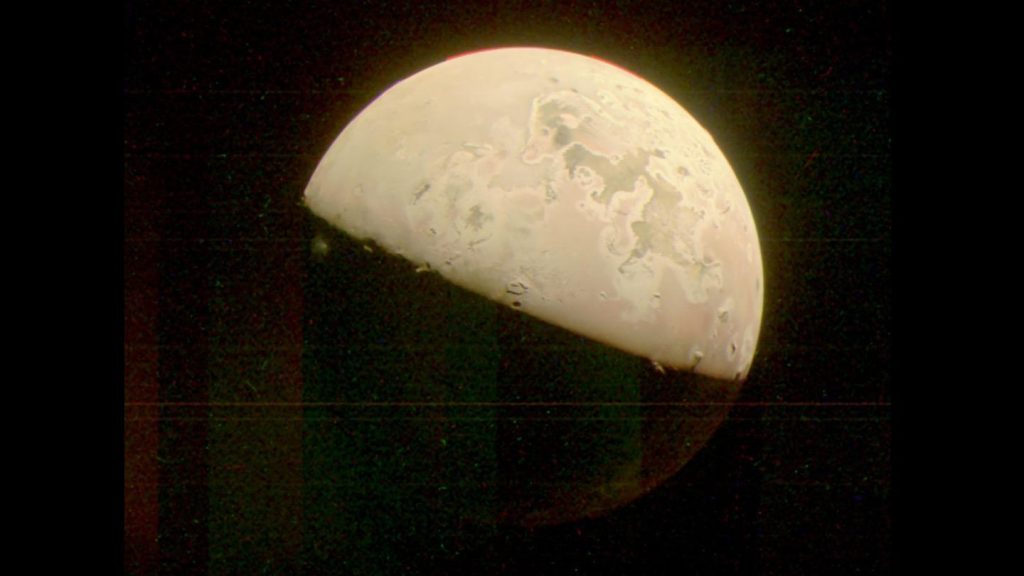Jupiter’s moon Io has been erupting volcanically for an incredibly long period of time, possibly its entire 4.57-billion-year existence. This makes Io the most volcanically active body in our solar system, with volcanoes shooting magma higher than planes fly on Earth. The amount of material that has erupted onto Io’s surface over time is estimated to be tens to hundreds of times its entire mantle, indicating a continuous volcanic activity. Data from NASA’s Juno spacecraft captured infrared images of Io’s surface, showing hotspots that indicate high temperatures, further confirming its volcanic activity.
Researchers, using data from the ALMA radio observatory, have determined the concentrations of heavy and light variants of sulfur and chlorine in Io’s atmosphere. Volcanic processes eject both variants from Io’s mantle into its atmosphere, with the lighter variants more likely to be lost to space. This leads to a gradual buildup of heavier variants in Io’s atmosphere, acting as a meter of its volcanic activity. The team found that Io has lost a significant amount of sulfur, between 94 to 99 percent, excluding what may be stored in its core. Calculations suggest that if Io had been losing sulfur at a higher rate, the depletion would have taken all or most of Io’s lifespan.
The long-term volcanism of Io could have implications for its sibling moon Europa, as both moons are orbitally locked in a gravitational dance that pumps heat into both. The sustained heat that has fueled Io’s volcanism may have also warmed Europa, potentially making it one of the most habitable worlds in our solar system. This suggests that while Io has been raging with volcanic activity, Europa may have been harboring conditions favorable to life for a long time. Understanding the dynamics between these two moons could provide valuable insights into the potential habitability of Europa.
The findings regarding Io’s sustained volcanic activity shed light on the moon’s extreme geological history. The continuous eruptions and volcanic processes have shaped Io’s surface over billions of years, providing scientists with valuable information about the moon’s internal processes and geology. By analyzing the data collected from various observations and spacecraft missions, researchers can unravel the mysteries of Io’s volcanic activity and its implications for the broader understanding of planetary geology and evolution.
The study of Io’s volcanic activity highlights the importance of planetary exploration and understanding the complex processes that shape celestial bodies in our solar system. By studying the geological history of moons like Io, scientists can gain insights into the formation and evolution of planetary bodies and their potential for habitability. The data collected from missions like NASA’s Juno spacecraft and telescopic observations provide valuable information that enhances our understanding of the diverse and dynamic nature of the solar system, ultimately contributing to our knowledge of planetary science and the search for life beyond Earth.


